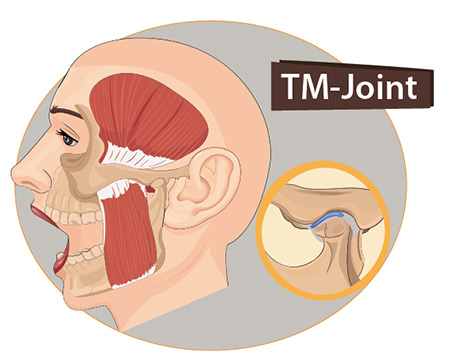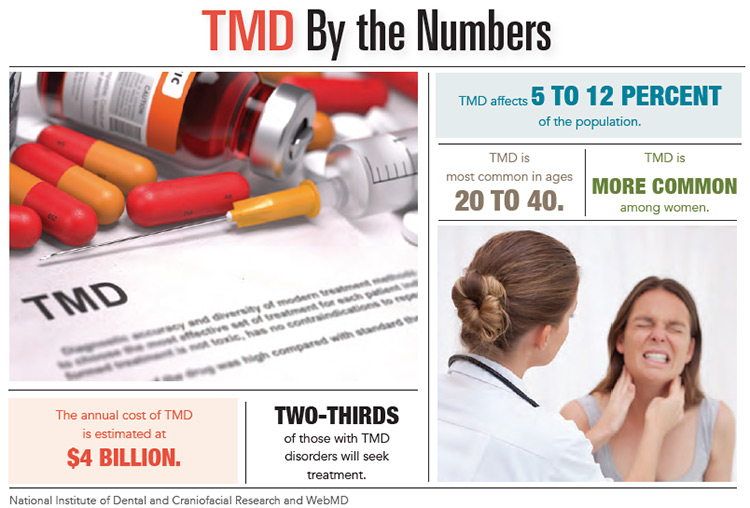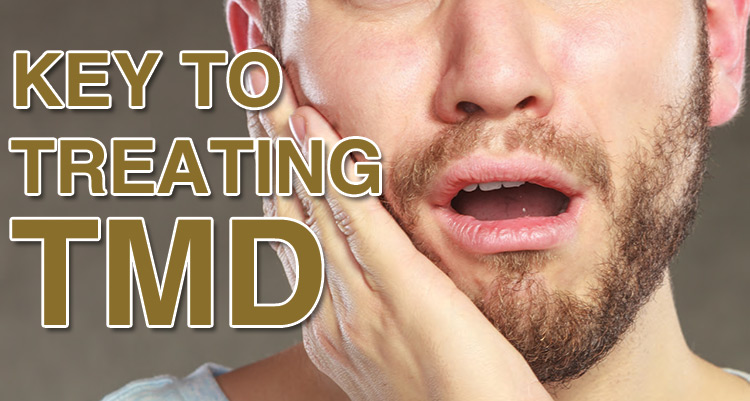When people experience jaw pain, they tend to assume they have a joint issue. They may even erroneously describe it as “TMJ” when really the pain could be in the jaw muscles or a result of a misaligned bite.
Issues with the jaw and facial muscles fall under a classification of temporomandibular disorders (TMD) and require patients to find a dentist who will take the time to get to the root cause of the problem. Some patients may indeed have a true joint disorder or joint damage – just as they can have joint problems in the knee or other parts of the body.
Dr. Todd Sander of Parkwood Dental Associates has been studying TMD and related issues for many years. His goal is to catch these issues early and keep them from developing into more severe problems.
Many people think they simply have to live with joint or jaw muscle pain, but that’s not the case, Dr. Sander said. It takes asking the right questions and figuring out what’s causing the pain – anything from bite disease to clenching and grinding the teeth or even something as simple as chewing gum all the time.
Clenching and Grinding
What used to be called “bruxism” – excessive clenching and grinding of the teeth – is a common cause of jaw muscle pain. Everyone clenches and grinds their teeth to some degree, often the result of physical strain, Dr. Sander said. Clenching and grinding also can be a result of fatigue, poor nutrition or a side effect of certain medications, including antidepressants.
Some people, Dr. Sander said, are hard-wired to clench and grind their teeth. Those patients are often the ones who don’t seek out treatment. They are tough to treat, but leaving clenching and grinding untreated can lead to other issues, including joint disorders.
Determining what’s causing a person to clench and grind their teeth helps the dentist plan the best course of treatment – possibly an appliance fitted to the teeth to protect them from the wear and tear of excessive grinding.
Treating clenching and grinding is important because these patients end up spending a lot more on dentistry, Dr. Sander said. They may have three to four times more dental work. But, with proper treatment, these patients can end up with dental health that is equivalent to someone who doesn’t clench or grind their teeth.
The bite, joint position and the jaw muscle have to coordinate. When they don’t, that’s when the pain comes in – especially if a patient is clenching and grinding their teeth, too.
Bite Disease
Another common cause of jaw muscle pain is something called occlusal disease or bite disease. Having an uneven bite, missing teeth or improperly aligned teeth means those jaw muscles are working harder to bring the upper and lower teeth together when chewing.
A cracked or loose tooth could be the culprit. A dentist trained to look for the signs of occlusal disease can spot issues early, employ the right treatment and help the patient avoid long-term problems. If the bite disease is caused by misaligned teeth, the patient may need orthodontic work to straighten the teeth.
Some symptoms of bite disease from The Pankey Institute, an organization that provides advanced dental education programs, include:
- You clench your jaw muscles for a long period of time.
- When you wake up in the morning, your jaw muscles feel tired and sore to the touch.
- You experience pain behind the eyes.
- You grind your teeth while sleeping.
- Your jaw clicks and pops upon opening.
- Your head or scalp feels painful to the touch.
- Your ears ache or you hear ringing.
- You have neck, shoulder or back pain.
- You feel dizzy.
Many of these TMD-related issues require time to review and treat, especially if orthotic appliances are needed to protect the teeth or align the bite with proper joint position. At Parkwood Dental Associates, the dental staff makes those appliances in house, carefully crafting each one to fit the patient’s teeth and mouth.
Aligning the Jaw
At Water’s Edge Dentistry, Dr. Nicole Dahlkemper specializes in neuromuscular dentistry, which places the jaw into its optimal position, relieving the symptoms associated with a joint disorder.
Dr. Dahlkemper determines the optimal position of the jaw by measuring the relaxed position of the head and neck muscles, then repositions the jaw to achieve those exact measurements. Treatment options include adjusting the bite, orthotics, orthodontics or restoring the teeth to their correct positions.
In some instances, Dr. Dahlkemper uses Botox to treat chronic teeth grinding. Botox injections can provide relief from jaw pain, tension and headaches.
Finding the Underlying Cause
 Determining the best course of treatment comes down to figuring out whether the patient is suffering from muscle pain, joint pain or maybe even both, said Dr. Michael Zetz of Crescent Moon Orthodontics.
Determining the best course of treatment comes down to figuring out whether the patient is suffering from muscle pain, joint pain or maybe even both, said Dr. Michael Zetz of Crescent Moon Orthodontics.
It’s similar to back pain, he said. Is the spine out of alignment and causing pain, or is the muscle pain pulling the spine out of alignment? Jaw pain works in much the same way.
“We have to understand the genesis of the pain – how is this affecting this individual and their quality of life? Can they open their mouth, eat, chew? It’s different for everyone,” Dr. Zetz said.
Orthodontics could be a possible treatment, particularly in situations where the patient has a problematic bite, he said, so aligning the teeth properly could be the solution.
While treatment options can vary, dentists agree TMD is a complex issue. Few dentists truly specialize in this area, so patients with chronic jaw pain should take time to find a dentist with experience who is willing to get to the root of the problem and employ the best treatment.
“It’s a sophisticated and difficult form of dentistry,” Dr. Sander said. “You have to find a dentist willing to take the time to diagnose the problem and work with you over a period of time.”








